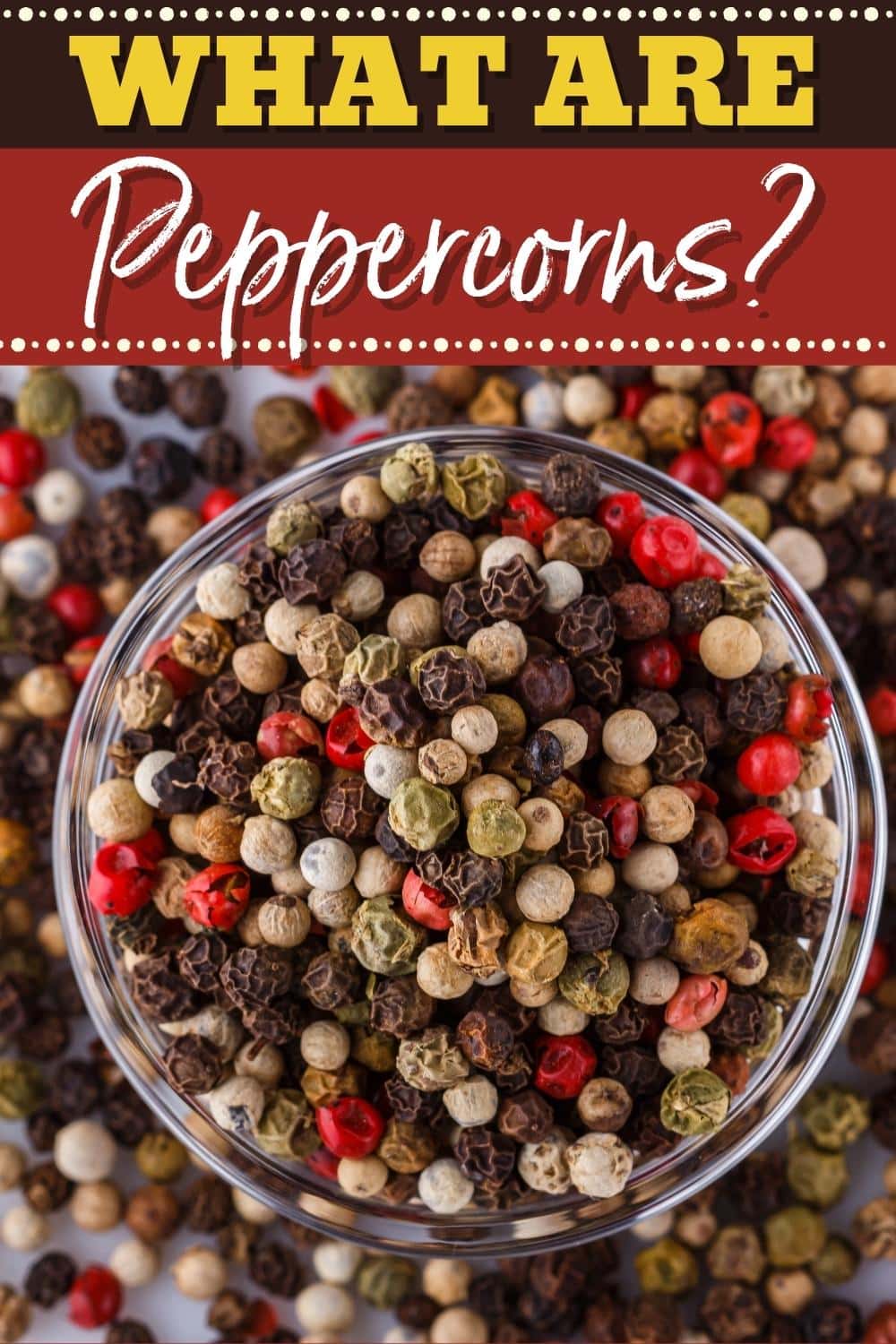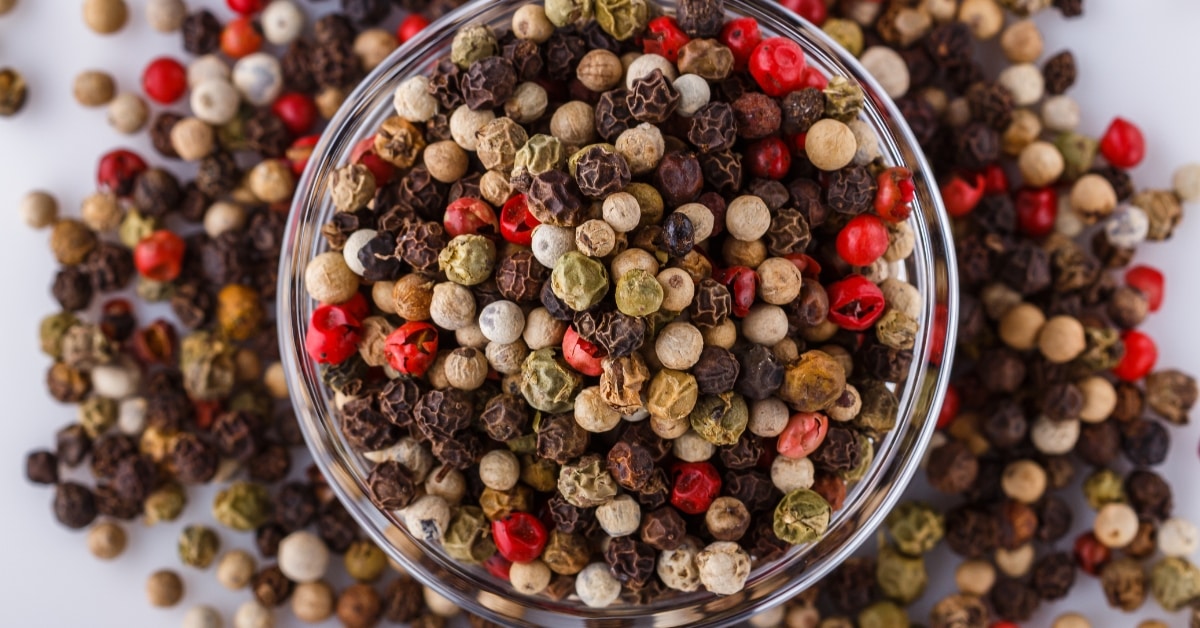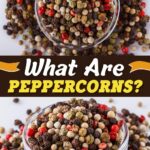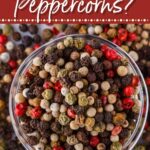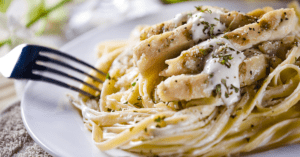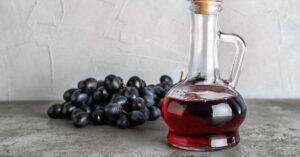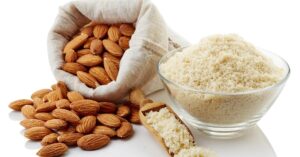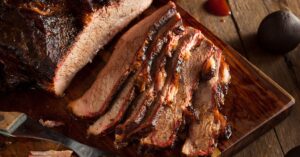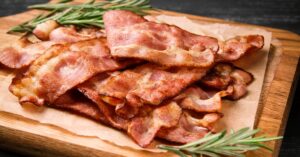If you’re seasoning a fabulous meal and wondering, what are peppercorns? – you aren’t alone.
Plenty of people aren’t quite sure what purpose they serve, nor do they know how to use them.
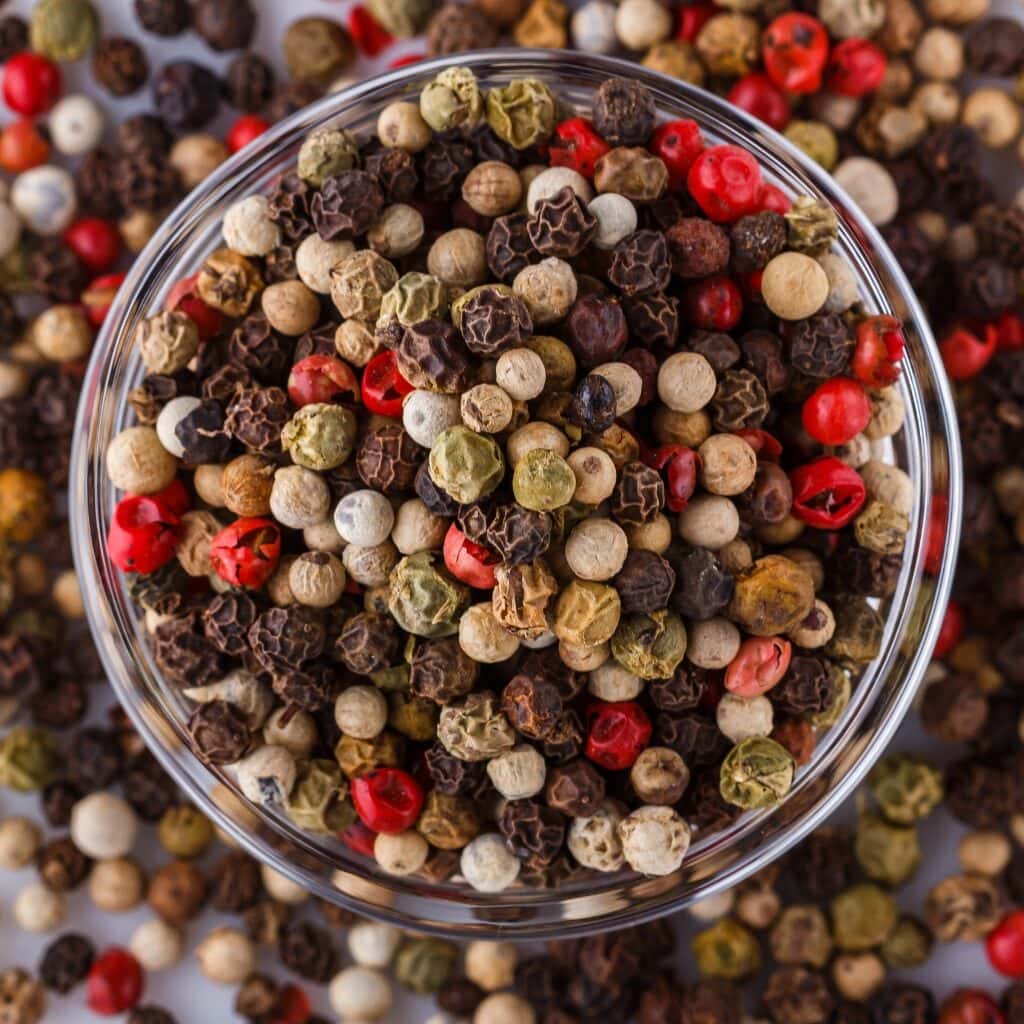
Peppercorns are a basic ingredient, but they’re absolutely essential for any serious cook or home chef.
They’re a relatively inexpensive (and long-lasting!) way to add a ton of flavor to your everyday dishes.
Today, I’ll tell you everything about them. Their origins, flavor profile, uses, and more.
So get ready to confidently add a bit of pizazz to your meals!
What Are Peppercorns?
Even if you aren’t familiar with peppercorns, you probably know about pepper.
Well, pepper, yes, that black pepper in your shaker, comes from peppercorns.
The peppercorns themselves are actually berries, meaning pepper is a fruit. (I know! Isn’t that nuts?!)
They come from the Indian Piper nigrum vine and are typically dried when sold.
People use peppercorns to add spice and flavor to their food. In Asia, people also use peppercorns for medicinal purposes.
They sometimes eat them fresh (instead of dried), as well.
Fresh or dried, peppercorns can be enjoyed whole.
However, most people put them in pepper mills or grinders and grind them into powdered form.
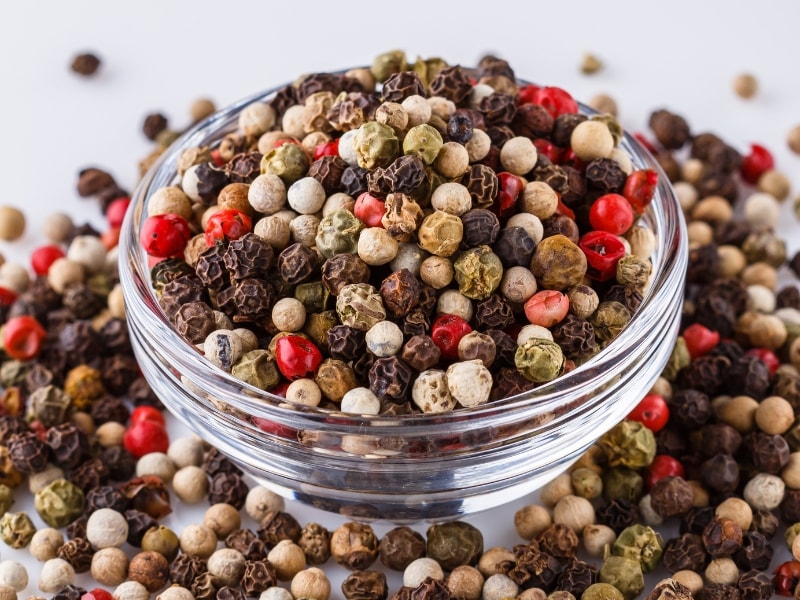
Peppercorn Varieties
There are three primary varieties of peppercorns:
- Black peppercorns
- White peppercorns
- Green peppercorns
There are also red peppercorns, but they’re difficult to find outside specialty shops. That also makes them expensive to purchase.
Pink and Sichuan peppercorns aren’t peppercorns at all, though they look like them.
For that reason, we won’t discuss them in this article.
Let’s stick to black, white, green, and red. The following sections will provide you with a bit of information about each.
Black Peppercorns
Black peppercorns are easily the most common variety. They are where our ground black pepper comes from, after all!
They are the ripe variety of peppercorns from the Piper nigrum vine.
They have a strong flavor! It’s warm and woodsy, flavorful, and fragrant.
Nearly everyone can immediately distinguish the scent and taste of black pepper.
We often use it in its ground form. However, you can add them whole to recipes, especially soups, stews, and sauces.
Fun fact: Ancient civilizations put black peppercorns in their more important mummies’ noses!
Red Peppercorns
As I mentioned, red peppercorns are extremely rare.
That’s why I didn’t list them under the “primary forms of peppercorns” above. They do exist, though.
Red peppercorns are true peppercorns from the Piper nigrum vine.
(Don’t confuse them with Sichuan peppers, which are also red but aren’t true peppercorns.)
They are an alternative to black peppercorns. They’ a’re fully ripe versions of the berries just like black peppercorns.
However, these are picked when fully ripe and treated to prevent them from turning black.
Their taste is most similar to black pepper but still slightly milder.
White Peppercorns
White peppercorns are the seeds of black peppercorns with their husks removed.
Dried husks are often wrinkly. Therefore, huskless white peppercorns look pretty different from their black counterparts.
Besides being white, they’re also much smoother.
White peppercorns (and, subsequently, white pepper) are a milder pepper variety.
They still have the earthiness of black pepper but not as much heat. Their flavor is also simpler and less intense.
Green Peppercorns
Green peppercorns are simply black peppercorns that haven’t yet ripened.
They’re even milder than white pepper and have a much fresher taste than both other varieties.
They also spoil more quickly than black and white peppercorns.
For that reason, you won’t see many people using them in recipes or salads. Instead, they typically show up pickled in brines.
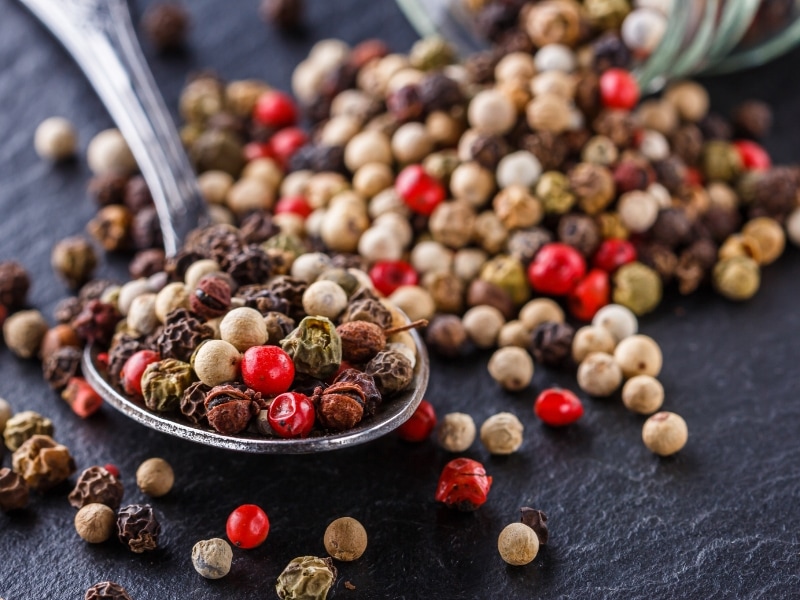
Peppercorn Nutrition
You might think something as small as a peppercorn wouldn’t have any nutritional value. However, that’s not strictly true.
Peppercorns, like most foods, have calories, carbs, etc.
Here’s a breakdown of some of what’s in a single tablespoon of ground black peppercorns:
- Calories: 17
- Carbohydrates: 4.4 g
- Fiber: 1.8 g
- Protein: 0.7 g
- Vitamin K: 11.3 mg
- Iron: 0.7 g
- Potassium: 91.7 mg
Now, those totals may be negligible, but they still exist!
Furthermore, as I mentioned, Eastern medicine has used peppercorns for centuries.
It’s used to treat colds and other ailments that affect the respiratory system.
Its intense flavor also helps stimulate gastric juices, tastebuds, and appetites.
Toothaches, indigestion, gangrene, and other ailments have also been treated with pepper.
Unfortunately, no scientific evidence currently supports that it is good for these ailments.
Of course, most of us don’t eat peppercorns or pepper for health reasons. For us, it’s all about the flavor.
So let’s get to what you really want to know: how to use peppercorns when cooking.

Cooking with Peppercorns
There are seemingly endless ways to cook with peppercorns. Especially if you grind them in a pepper grinder first.
In Asia, practically every recipe uses peppercorns or pepper.
Of course, that’s pretty close to being true in the United States, too.
We use pepper and peppercorns to season everything from meat and veggies to bagels and eggs!
It’s such an essential part of the average person’s kitchen that they make special containers to hold it!
Here are just a few of the foods we add whole or ground peppercorns to:
- Beef, pork, poultry, fish, and other seafood
- Green veggies, root veggies, and other veggies
- Eggs
- Rice, corn, and other grains
- Stews, soups, chilis, and sauces
- Bagels and other breads
- Salads and salad dressings
- Certain fruits
- Pickles and other pickled foods
- Marinades and rubs
- Spice blends (i.e., lemon pepper, Italian seasoning, etc.)
- Various ethnic dishes
- Burgers and sandwiches
- Certain desserts containing ginger, allspice, or cardamom
As you can see, there isn’t much to which you can’t add pepper.
It might not be quite as prevalent as salt, but it’s pretty close.
The great thing about pepper, though, is that it’s long-lasting and easy to store.
You can keep it for years without it going bad or losing its flavor.
That means you can always have some on hand when you need it!
Just don’t forget to invest in a pepper grinder if you’re using whole peppercorns.
